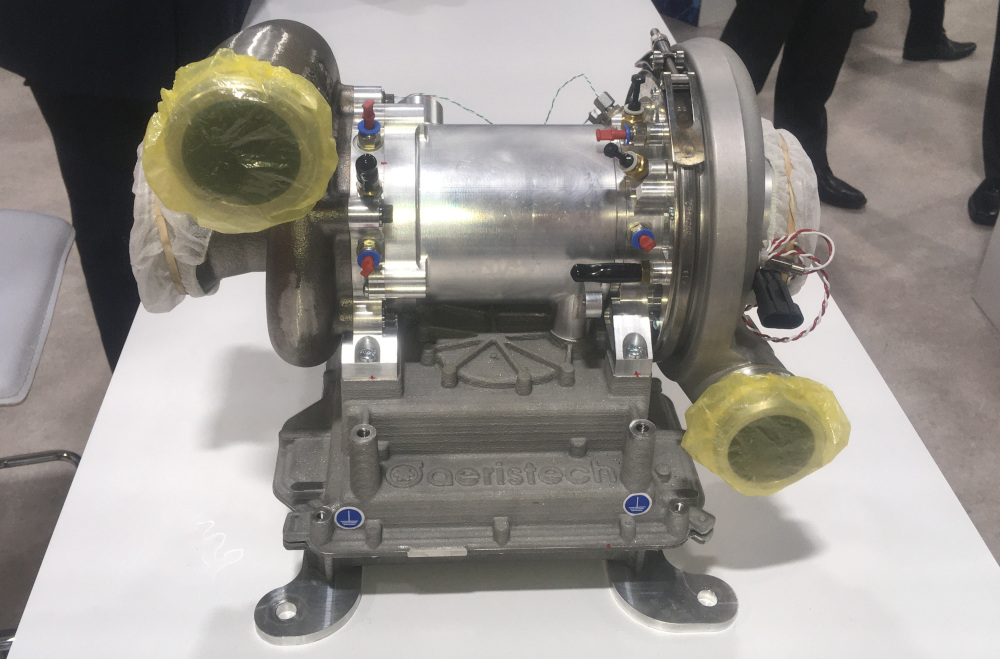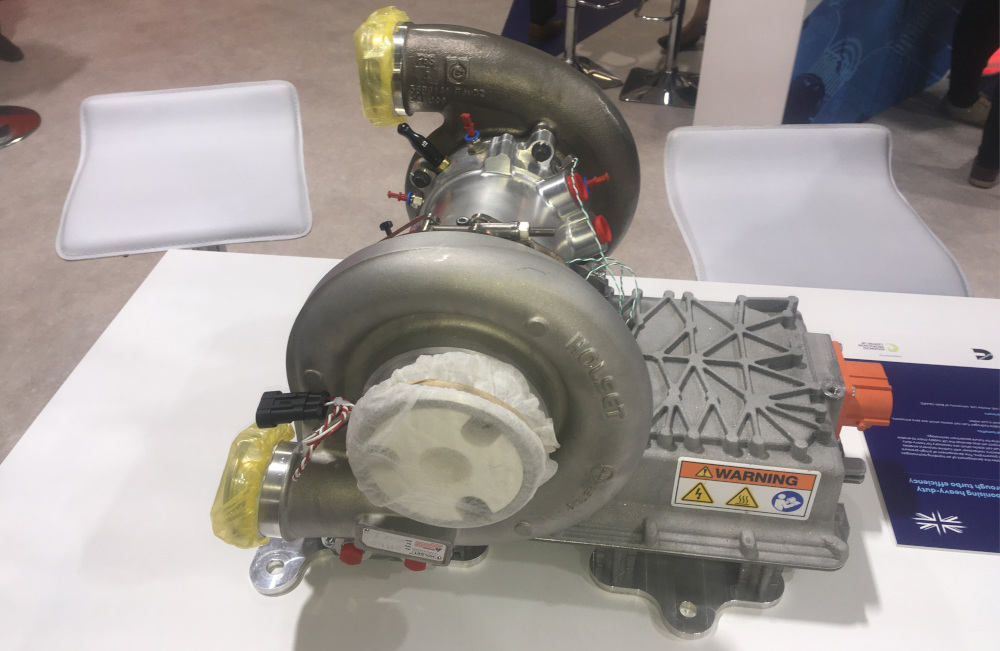Cummins develops fuel cell e-turbocharger

(Photos by the author)
Pumping air into an engine so that more fuel can be burned is a long-established means of persuading the engine to provide more power and, in the case of turbocharging, greater fuel efficiency (writes Peter Donaldson). These days, the same technique is being applied to fuel cells and for the same reasons.
Cummins, for example, is developing an e-turbocharger for a fuel cell in heavy duty on-highway applications, and displayed a working prototype at the recent LCV Cenex event at the UTAC automotive development centre in the UK. The company is partnered with Aeristech under the Advanced Propulsion Centre’s APC 15 competition, and is about halfway through a 3 year project.
“Early fuel cells breathe a low-pressure air supply for a certain power density,” explains Laith Al-kazaz, director of advanced engineering at Cummins. “Now we are trying to increase the air supply, so the more air it takes in, the more power-dense the fuel cell will be.
The e-turbocharger the team is developing is sized for a 250 kW fuel cell stack suitable for a commercial 44 tonne truck. Al-kazaz adds that the pressure ratio will be somewhere between three and four to one. “That has yet to be determined, because everyone is finding their feet at the moment and trying to specify what the requirements are.”
He says that between 20 and 30% of the power required by the turbocharger’s centrifugal compressor is supplied the turbine, which is driven by the 85 ºC water vapour that constitutes the fuel cell’s exhaust, with the rest supplied by an electric motor.
“By doing that, we are using energy that would otherwise have been wasted, and it also allows us to use a smaller motor,” he says.
The unit at the show was a fully functional prototype, instrumented for an ongoing test programme with thermocouples for temperature measurement, and other devices for measuring airflow and so on.
“That allows us to correlate the physical test results for our analytical models,” he says. “Then, when we refine it and produce the Mk2 version next year ,we can put all that learning into what will be a more compact unit.

“Cummins’ main contribution is matching the turbocharger to the fuel cell, which entails defining motor requirements and optimising the compressor and turbine aerodynamics to meet the airflow needs at the highest system efficiency.”
Major engineering challenges include optimising the e-turbocharger’s air bearing system to suit the type of rotor used and to withstand speeds of around 100,000 rpm. He adds that air bearings are essential, because any oil-fed bearing would pose an unacceptable risk of contaminating the fuel cell feed air with oil, which would damage the stack.
“Also, there is an awful lot of heat energy involved, and it is a real challenge for the electronics, the bearings and the entire system to contain and manage that heat.”
Aeristech is focused on the electric motor and power electronics. The motor is a direct drive unit, and the company has designed and patented both the motor and the controller for very high speed applications, says Eric Newell, the company’s head of business development.
“In terms of our control electronics, they operate at one-tenth of the frequency of other inverters, which means we can use proprietary and therefore less expensive electronics in these units.”
That is remarkable given the very high motor speed and the fact that the inverter is based on silicon carbide MOSFETs, which are normally associated with very high switching frequencies and higher cost. Silicon carbide’s low switching losses also help with overall efficiency.
“As silicon carbide is coming down in price, we have moved now to look at that as the next step,” Newell says.
Efficiency, cost and power density are very important to the project, as fuel cells have to be able to compete operationally with diesels, Al-kazaz says.
“We have to take diesel trucks off the road, and we want to replace them with fuel cell vehicles, “ he says. “So we’ve got to convince owners that, in terms of driveability and duty cycle, we can match what they had before.”
ONLINE PARTNERS































